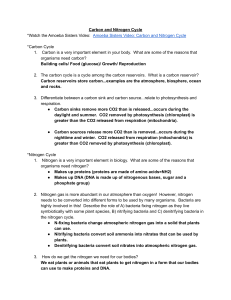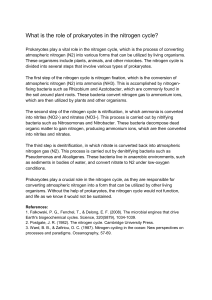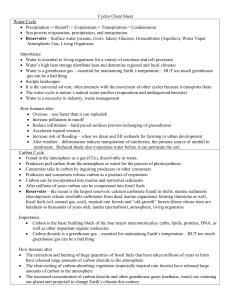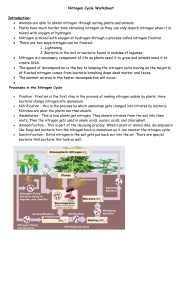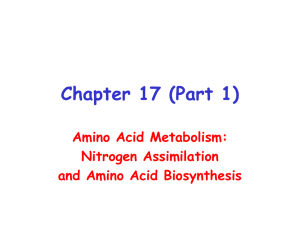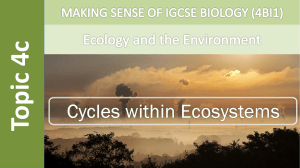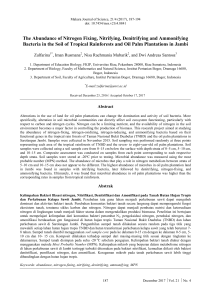Notes Section 5.1-5.2 Microbiology Microbiology- Study of small living things.
advertisement
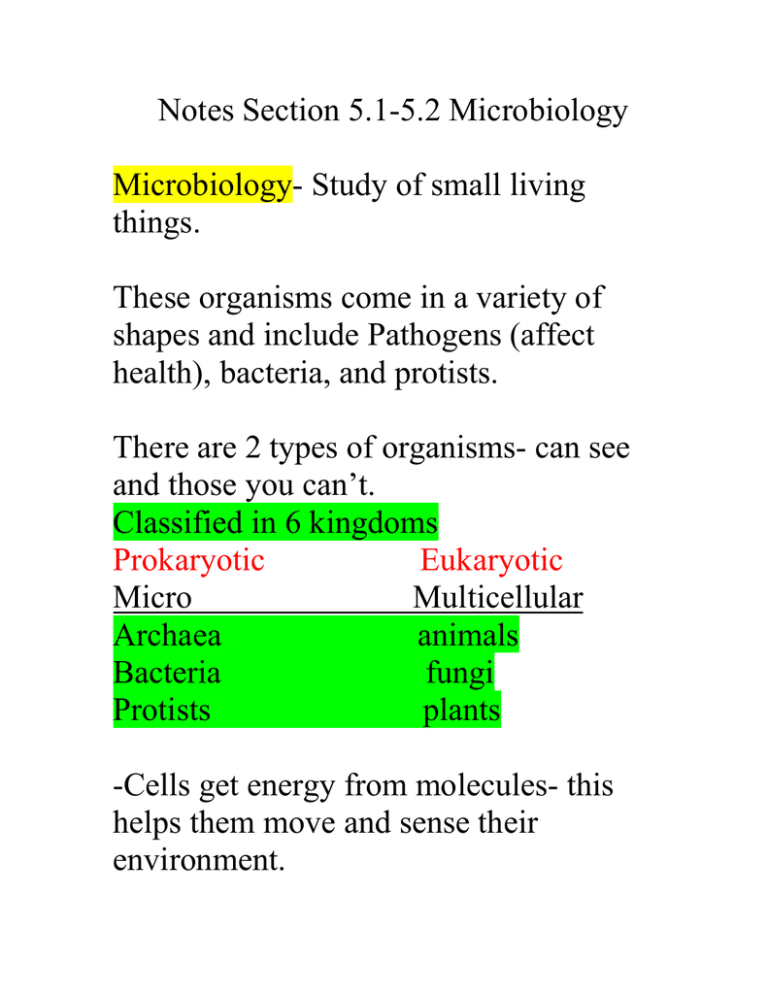
Notes Section 5.1-5.2 Microbiology Microbiology- Study of small living things. These organisms come in a variety of shapes and include Pathogens (affect health), bacteria, and protists. There are 2 types of organisms- can see and those you can’t. Classified in 6 kingdoms Prokaryotic Eukaryotic Micro Multicellular Archaea animals Bacteria fungi Protists plants -Cells get energy from molecules- this helps them move and sense their environment. -As living things increase in size they need energy to replace worn out parts. Cells grow and when they get too big they divide. Some cells copy themselves – Binary Fission- Bacteria- daughter cell is exact replica of the parent (including DNA). Bacteria uses this and multiplies every 20 mins. Response to Change (sign of life) Light, temp, touch, avoid being eaten, performs tasks necessary for survival. Food- Some like plants (autotrophic) or animals (heterotrophic). H2O, CO2, and O2 are essential. 5.2 Bacteria Simplest form of Life. Hundreds of millions on your skin. Trillions in your digestive tract (help you digest food). Found everywhere Composed of 1 cell and no nucleus DNA inside the cytoplasm no organelles reproduces with binary fission. Contains molecules *Larger than a virus (can filter these). ****3shapes-rod, spiral, and round. 3 Roles 1. producers- cyanobacteria- contain chlorophyll and are found as food sources in the Ocean. Produce O2. 2. decomposers-break down dead material.-sewage clean up ****(bioremediation), oil spills, converts nitrogen gas to nitrogen compounds (nitrogen fixation), aid in digestion. 3. parasites- Staphylococcus- (MRSA). Harmful Bacteria- causes diseases. TB, Cholera, Diarrhea. Can dissolve your cells. Can get vaccines for them, and antibiotics.


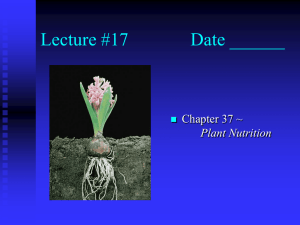
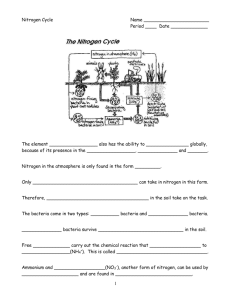

![Material Cycles [Compatibility Mode] (1)](http://s3.studylib.net/store/data/025522058_1-1908ac1c570ad56ec73ba7b3c9398ed0-300x300.png)
